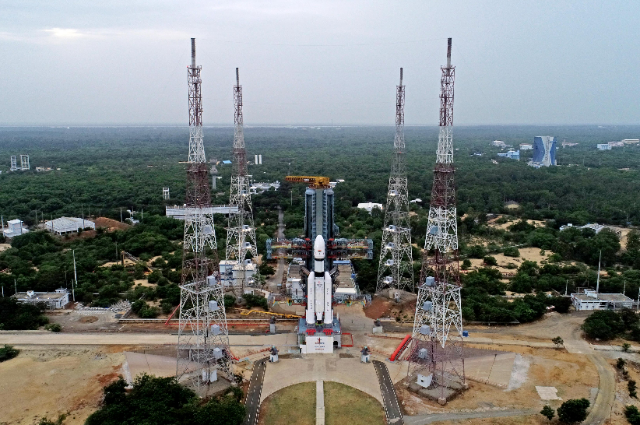Tomorrow, India will make its second attempt to land on the moon. The previous mission, Chandrayaan-2, had failed in it's very last leg.
India's third mission to the moon will take off on Friday at 2:35 pm. The mission aims to achieve what it's predecessor had failed to land softly on the lunar surface and explore it with a rover.
A successful soft landing will make India the fourth country, after the United States, Russia, and China to achieve the feat. The position remains vacant after the missions from India and Israel in 2019 crash-landed and the spacecraft carrying a lander-rover from Japan and a rover from UAE failed in 2022.
Objectives of the mission remain the same, scientists at the Indian Space Research Organisation (ISRO) have learnt from the previous mission.
The lander's design was improved after a series of tests to see how it performs under various circumstances such as the inability to reach the landing spot, failure of electronics, and velocity being higher than needed.
The Mission:
After launching into an orbit around the Earth at an altitude of 179km on Friday, the spacecraft will gradually increase it's orbits in a series of maneuvers to escape the gravity of Earth and to slingshot towards the moon.
After reaching close to the moon, another series of maneuvers will reduce the orbit of the spacecraft to a 100×100 km circular one. Thereafter, the lander which carries the rover inside it, will separate from the propulsion module and start it's powered descent.
This whole process is likely to take around 42 days, with the landing slated for 23rd August at the lunar dawn. Lunar days and nights last for 14 Earth days.
The lander and the rover are built to survive only one lunar day. They can't survive the extreme drop in temperatures during lunar nights.
As for the landing site, it has been moved slightly from the previous location on a plateau between two craters. The site at around 70°S near the southern pole of the moon was selected as there are several craters here that remain permanently in shade and can be the storehouse of water and minerals. The change in the current landing site has been made on the basis of the pictures captured by the Chandrayaan-2 orbiter, which have provided a very clear map of the moon. Probably, few modifications have been made for a safe landing.
Changes in the Mission and Design:
ISRO Chairperson, S Somnath recently said the changes to the current mission were 'failure-based'. We are looking at what can go wrong and how we can deal with it.
During Chandrayaan-2, the lander and the rover crashed on the moon instead of landing softly because of the larger thrust produced by the engines as expected. The spacecraft needed to turn very fast but failed due to the inability of the software. It did hit the ground but with a higher velocity.
The landing area has been expanded this time. The lander has been provided with more fuel so that it can travel long distances. High-resolution images have been fed into the lander and it will click images just to confirm its location.
Changes have been made to the physical structure of the lander. More solar panels have been added to the body of the lander. The legs are more sturdier this time.
There will be four scientific payloads on the lander to study lunar quakes, thermal properties of the lunar surface, and a passive experiment to measure the distance between the Earth and the moon. It shall also attempt to study the chemical and mineral composition of the lunar surface. It shall also look for smaller planets that might be habitable in the reflected light.
. . .
Reference:
- www.isro.gov.in
- indianexpress.com

